There is no doubt that community recovery has been impacted by the requirements to protect people from the impacts of COVID-19, but the Australian environment just gets on with renewal.
A year on
Amazingly it has been just over 12 months since the fires impacted Sarsfield in late 2019. A lot has changed for us and the environment that we live in and that surrounds us. It is has been a great relief to see the burnt bush start to return to green, to explore what has survived and thrived, and to observe the changes to our neighbourhood and outlook.
The environment where we live
We live on land that is entirely bush. It is classified as being part of Ecological Vegetation Class (EVC) 877 – Low Land Herb-rich Forest. Close to the Nicholson River, the conservation status is depleted. It is open eucalypt forest primary including Coast Grey-Box, White Stringy Bark, Red Box and the occasional Iron Bark, with a diverse understory and few weeds. This EVC covers a quite limited extent that is specific to this part of Sarsfield on the western side of the Nicholson River and north of the Great Alpine Road.
We understand that our land was impacted by fires in March 1965. There was evidence of the impact of those fires, including the fact that many of the large trees here are of a very similar age and structure. That makes the trees just a little older than I am! You can find details about the 1965 Gippsland fires here: 1965 Gippsland Fires

Our place in 2006 – prior to the drought
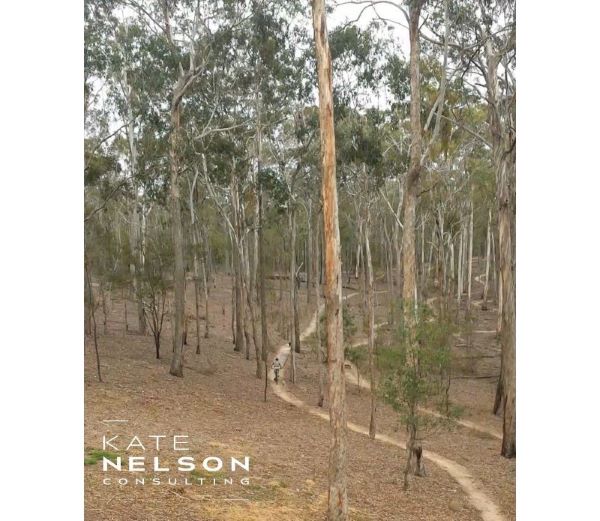
Riding through the drought impacted landscape prior to the fires
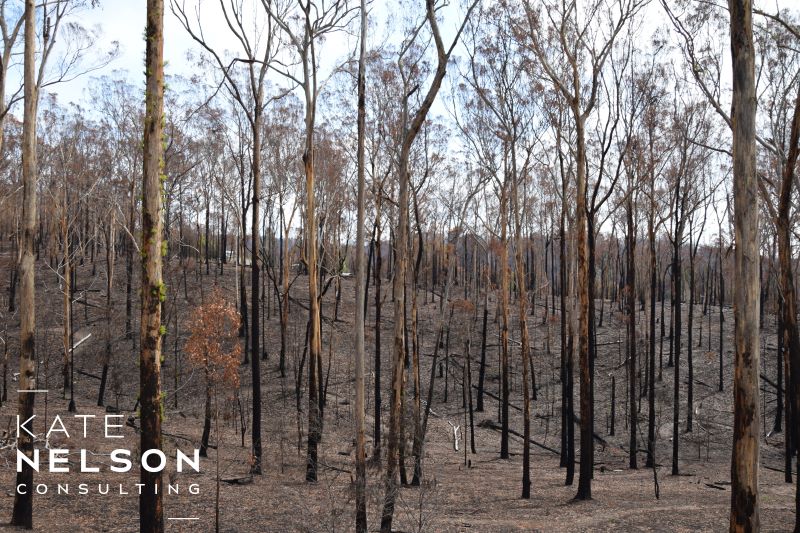
The outlook from our deck in February 2020
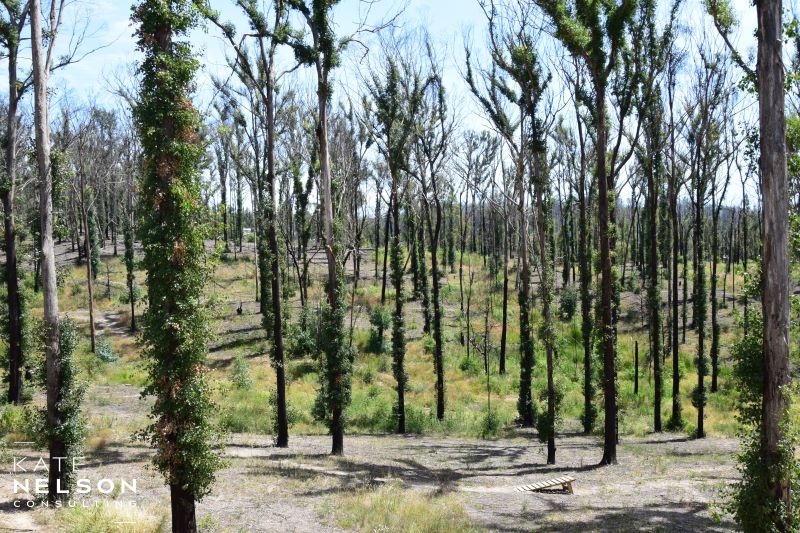
…. and in December 2020
Owning natural areas
We’ve always considered ourselves very fortunate to be able to own some bush – at least in the way that we own property in Australia. Owning trees feel like a strange concept and custodianship for the time that we are here feels more appropriate.
In the time that we have lived here we have always spent a lot of time engaging with our land and the vegetation. Not only is the bush the main focus of our living areas, it is also a place where we recreate having constructed almost 4km of trails that we used regularly over many years. We’ve explored the place in detail and we are continually surprised by the different orchids and other plants that we find through the different seasons.
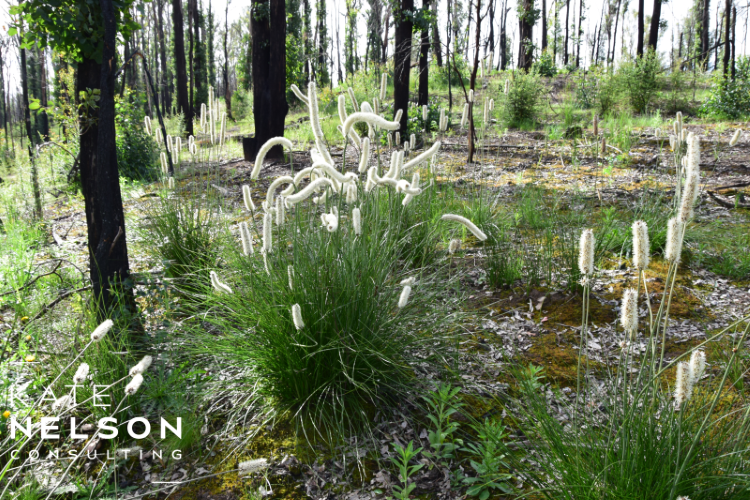
Watching kangaroos and wallabies hop through and finding the places where they are camped has always felt special too. We’ve even seen a Koala or two over the years.
Living in the bush is a big part of our lifestyle and a contributor to our wellbeing too. We know from the extensive research that has been undertaken that green spaces and connecting with nature is really important in urban spaces Wild Urban Parks . While I’m not sure of the research in regional areas, I know from experience working in East Gippsland that many people live in the country primarily because of the environment.
Our bush is definitely a big part of the reason for why we live where we do, despite the risk.
Renewal
Our bush is slowly recovering. Many trees have been lost in the fire and soon after the fire went through. The streetscape has changed too as a result of the impacts associated with removal of dangerous trees and fences being reconstructed.
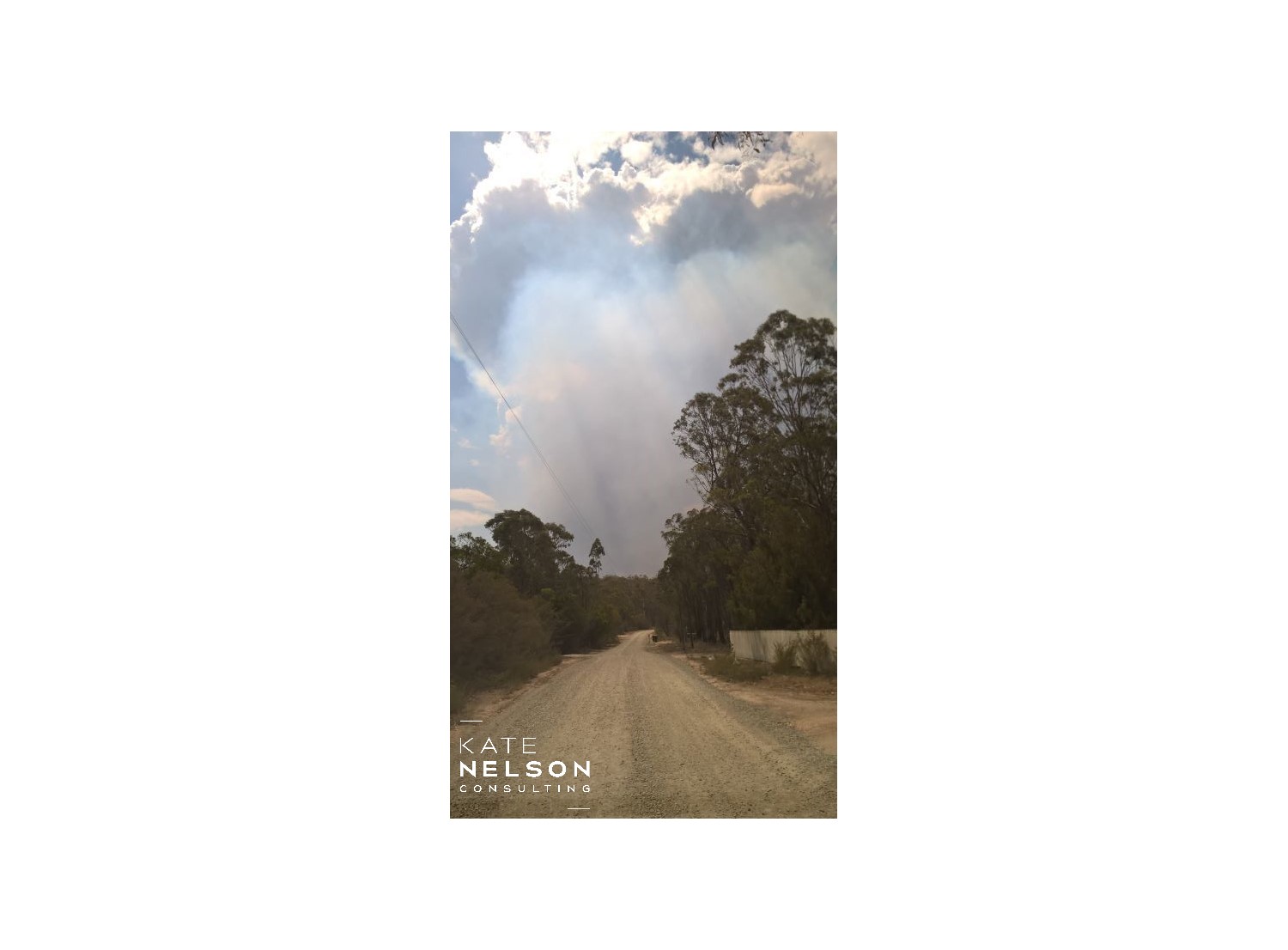
Our Street on the day of the fires.
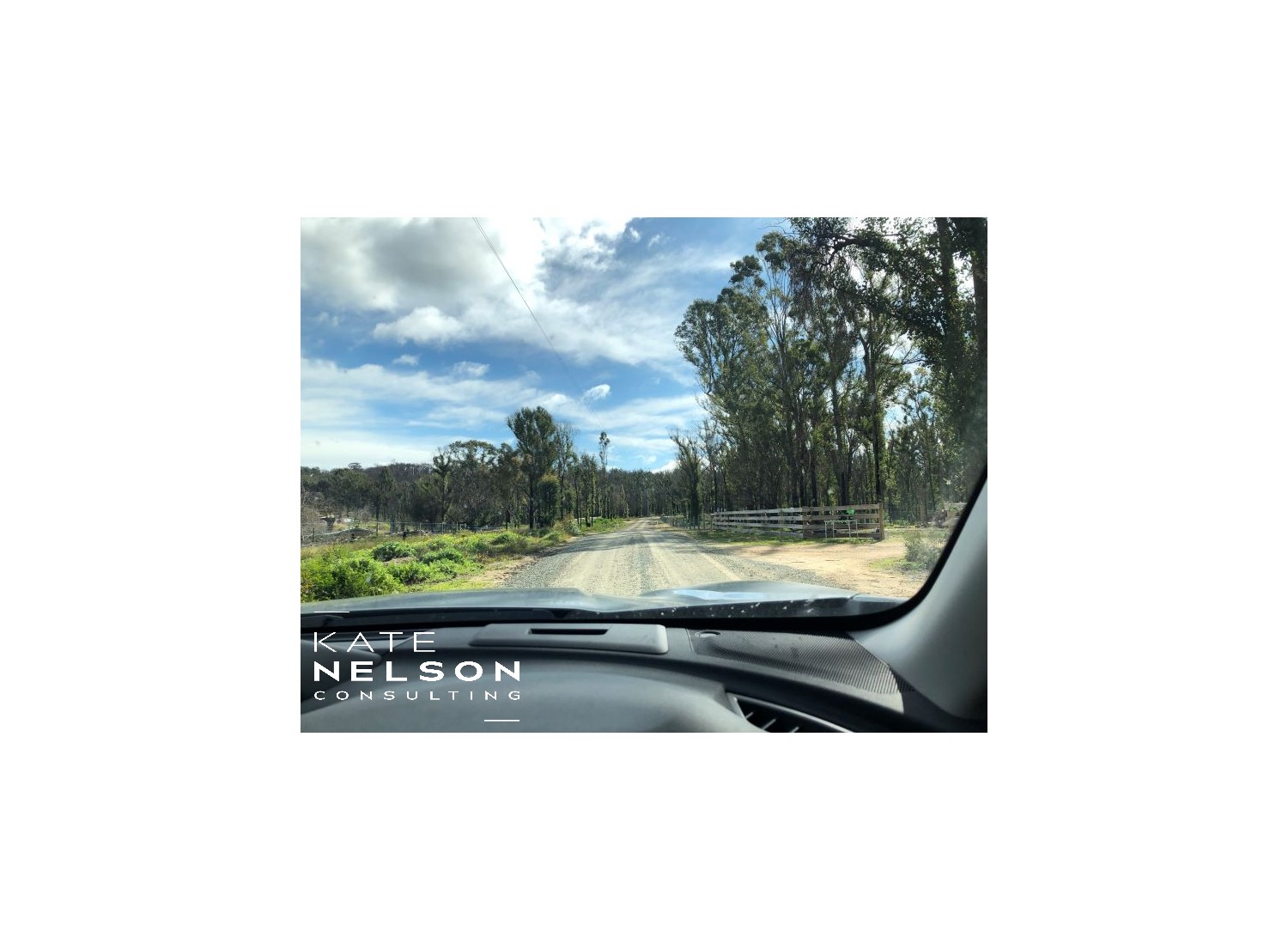
…. and more recently following removal of dangerous trees and rebuilding fences.
We still spend a lot of time out on our land watching the changes as the year has passed. The resilience of the Australian bush is quite amazing, with the emergence of pioneering species such as Kangaroo Apples and a variety of wattles and gradually replacement eucalypts are evident too.
It is a hotter environment without the leaf canopy and the growth of grasses has been a new and dominant feature to begin with. Things are out of balance right now, but it will return eventually.
While a lot of the trails we built remain, and some have been renewed, they aren’t in good shape at the moment but we know with some time and energy this will once again be a key recreation resource for us.
We’ve spent quite a bit of time riding through areas of bush to the north of here and Clifton Creek, and the reality is that our bush is doing pretty well. There are extensive areas of the East Gippsland environment that based on what can be seen will take a long time to regenerate fully.
Risks for the future
East Gippsland is familiar with fires and the landscape and communities here have regular experience of encounters with fires, some burning for extended periods of time. This fire, considering the scale and extent of destruction, and given the fact that it was one of many similarly large and destructive fires in Australia over Black Summer, is something different even in East Gippsland.
This kind of fire has the potential to change relationships with the environment that we live in, changing the connection to natural areas from one of wellbeing, to one where there is heightened risk and anxiousness each fire season.
The reality is that the health of our environment is also a key contributor to the economic wellbeing and lifestyles of many people in East Gippsland. So, whether there is a connection (direct and indirect) to recreation and tourism, agricultural or other primary industries, and all of the supporting activities that keep the community going, all are vulnerable to the impact of fire and will be increasingly so as the climate continues to change. This article by Neil McCarthy CEO of Mosaic Insights and his team, while focused on Omeo, provides an insightful view of the challenges for rural communities: When Rural Resilience is Wafer Thin
Resilient Recovery
As the recovery process progresses with communities in East Gippsland and we have people’s attention and human and other resources available to us, there is an opportunity, to start the process of making sure that East Gippsland is on a path to a more resilient longer term future. A future that is better able to overcome shocks and stresses and to cope with uncertainty and future challenges and opportunities by making sure that we invest in resilience building and seeking to safe guard what is important to the future of East Gippsland.
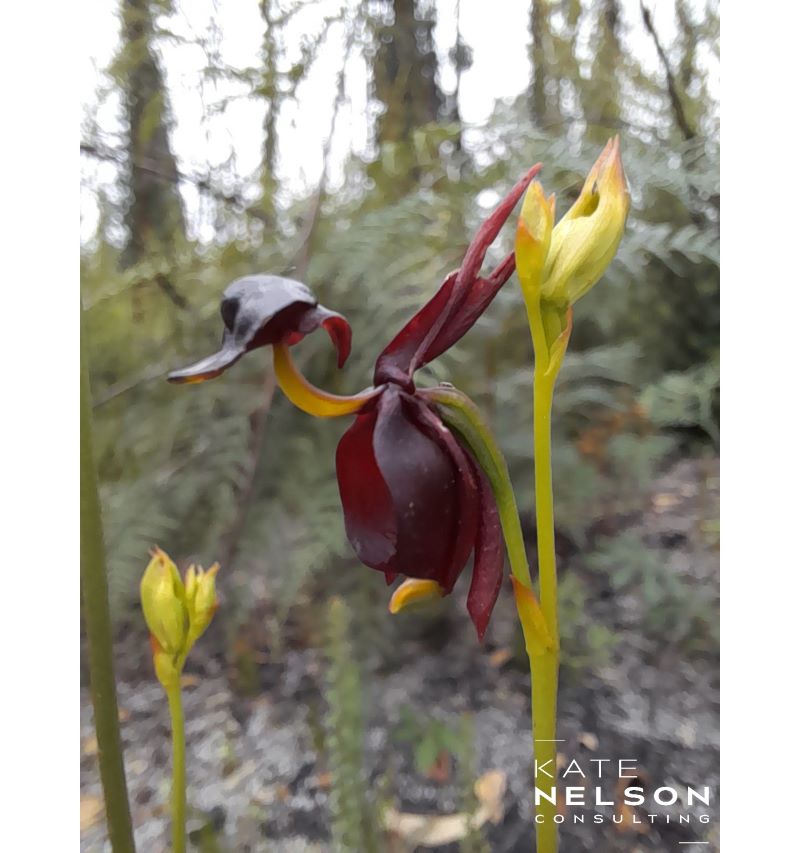
Flying Duck Orchid – There are amazing things happening out there in the bush.
